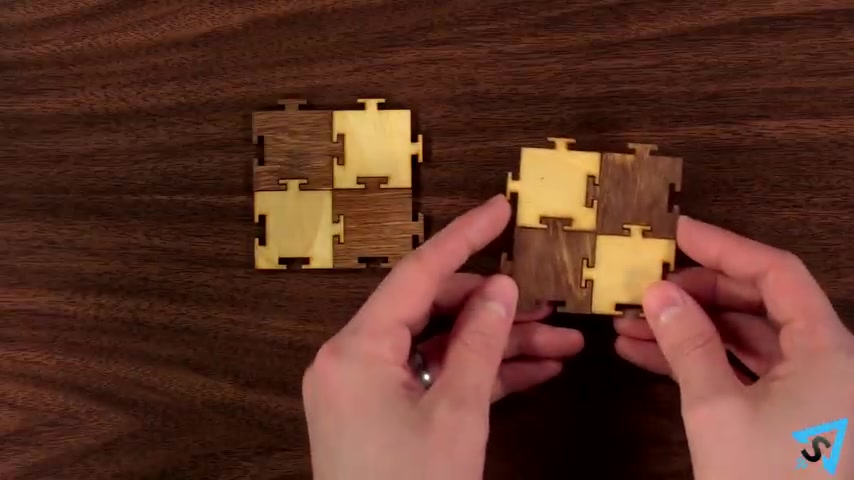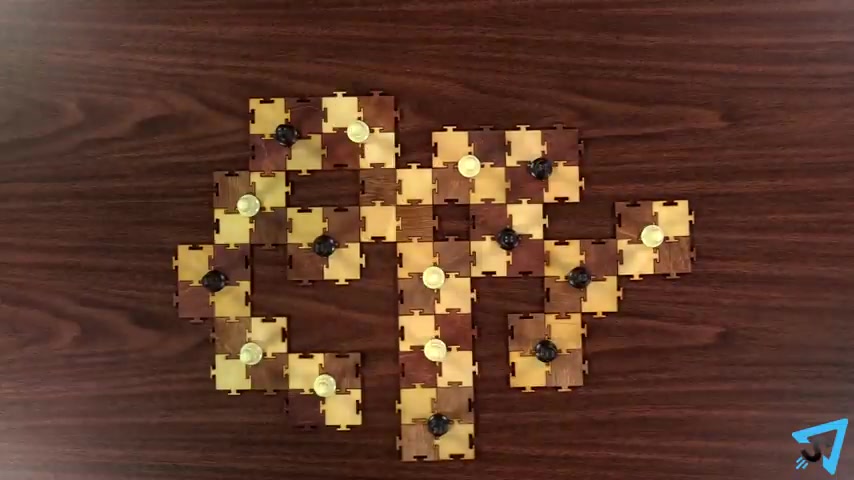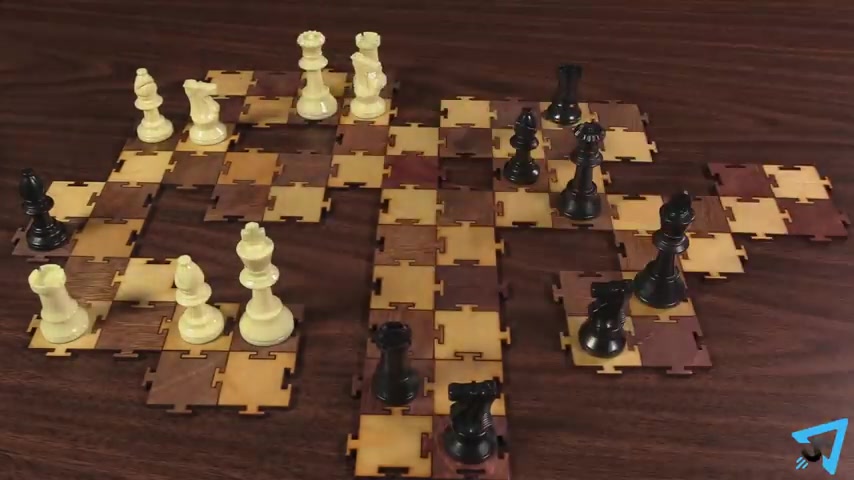https://www.youtube.com/watch?v=Uy3rp20db4M
How to play Puzzle Board Chess

Puzzle board .
Chess , how to play ?
The rules are the same as regular chess except for these changes .
For a refresher of those rules check out this video , give each player a standard set of chess pieces in opposing colors .
Place one puzzle board tile in the center of the table as the game board and give each player eight puzzle board tiles , pick a player to go first , then turns alternate on your turn , connect one of your puzzle board tiles to any available spot on the game board with a minimum of one connection points orient the tile or flip it over to retain the checkerboard pattern .
Place one of your ponds on your place tile to indicate it is yours .
Pawns are only used during setup to distinguish each player's tiles and they are not used for play .

You may not move a puzzle board tile once it has been placed and you are allowed to connect to an opponent's placed tile .
Once all the tiles have been placed , the board is now built .
Players now simultaneously place their non pawn chess pieces on any of their controlled tiles , removing the ponds from those tiles .
Players may move and rearrange their pieces .
As many times as they want .
Players may not place pieces on the starting tile .
You may place your bishops on the same color spaces .
If you want , you may not place your king into check .
Nor may you place a piece in a position that checks your opponent's king .

Once all players are satisfied with their positions and no more rearrangements are happening , then remove any remaining ponds from the board and the game begins , pieces move like they normally do with these distinctions .
Knights can jump over gaps in the board .
So long as they retain their l movement and land on a physical square .
Bishops , kings and queens can travel diagonally between tiles with adjoined corners .
Even if they aren't connected by the tabs , you are not allowed to castle the first player to checkmate their opponent wins .
Are you looking for a way to reach a wider audience and get more views on your videos?
Our innovative video to text transcribing service can help you do just that.
We provide accurate transcriptions of your videos along with visual content that will help you attract new viewers and keep them engaged. Plus, our data analytics and ad campaign tools can help you monetize your content and maximize your revenue.
Let's partner up and take your video content to the next level!
Contact us today to learn more.